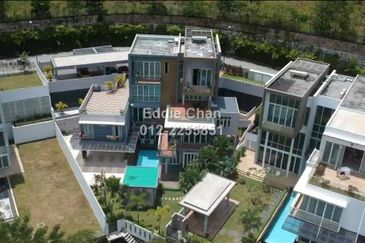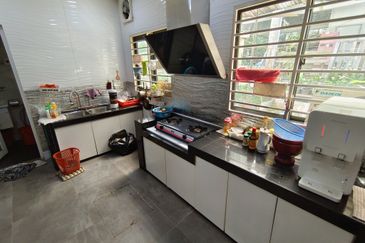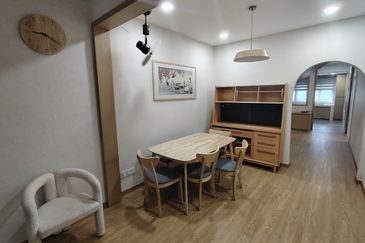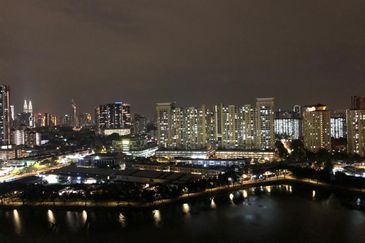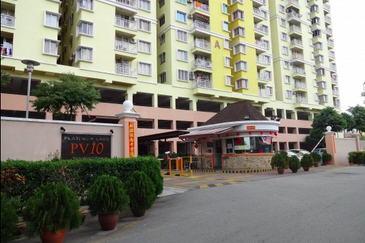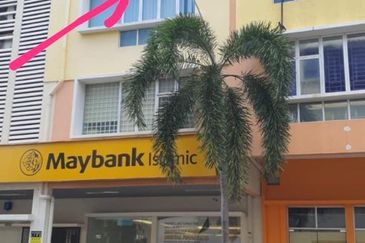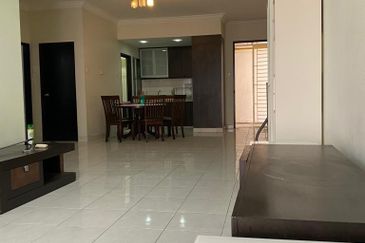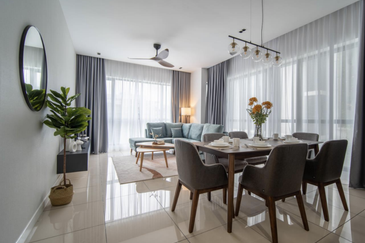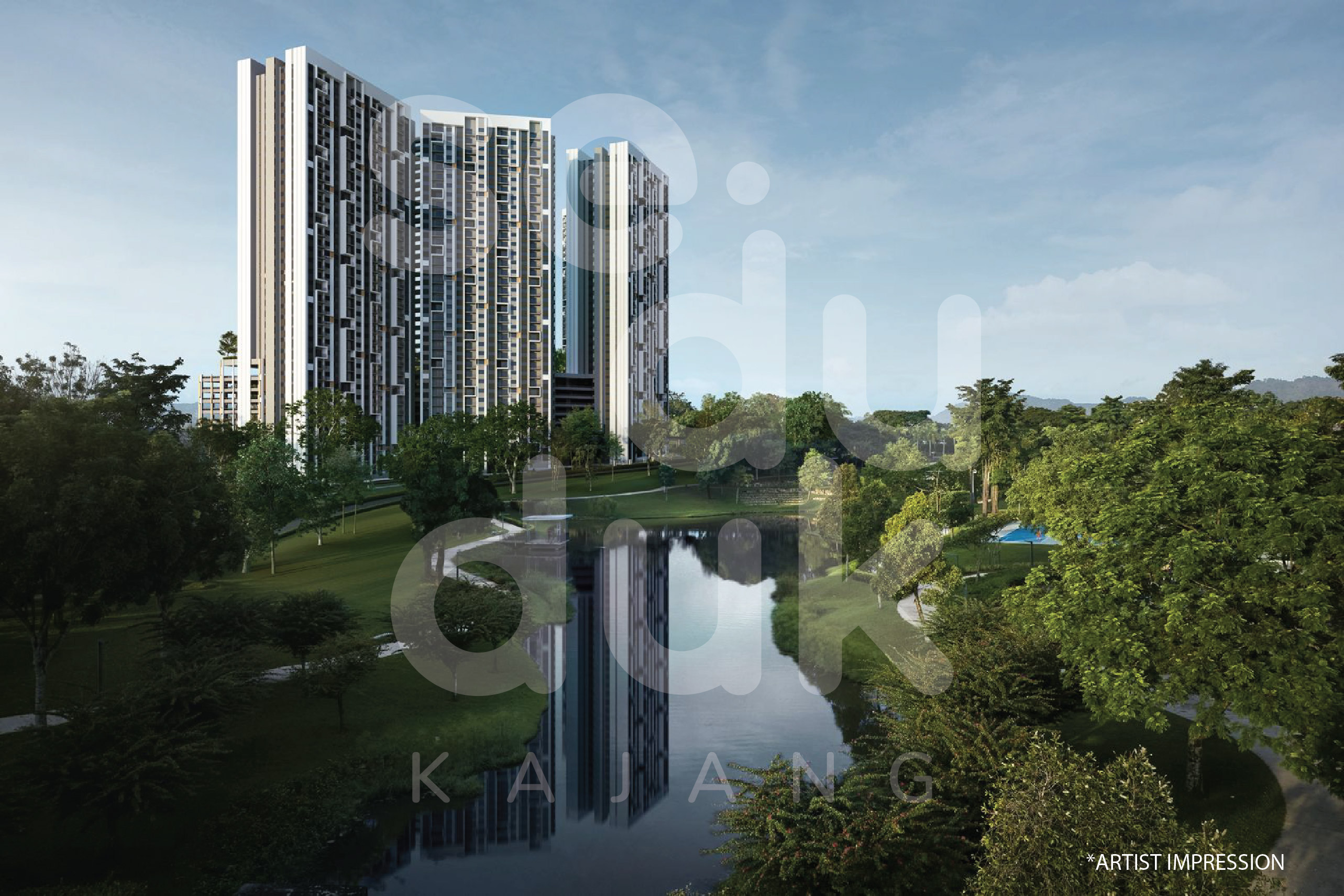Mega Planner Jaya Sdn Bhd (MPJ), which has kept a low profile for close to a decade, is making a comeback to the local property scene with new shareholders, board of directors and a new project in Taman Melati in Setapak, Gombak, Kuala Lumpur.
The property development company that was established in the 1990s has come to accept the fact that much needs to be done to rebuild its reputation in the industry.
According to MPJ’s new executive chairman Zaharuddin Saidon, financial difficulties led to the derailment of Phase 2 of the company’s project in Taman Melati. Led by him, the new shareholders — including MPJ’s general manager Albert Quay, Akaca Capital Sdn Bhd’s managing director Arthur Sam, Abdul Rani Achmed Abdullah and Albert Chua — took over the company in April this year and have revived the project.
MPJ, now a special purpose vehicle (SPV) to complete the Taman Melati project, is being run by experienced members, both at the board and management levels. The new members are said to have worked with multinational and public listed corporations, including those involved in property development and management. Zaharuddin, for instance, is former CEO of TH Properties Sdn Bhd, a subsidiary of Lembaga Tabung Haji. The team, says Zaharuddin, has expertise in development, construction and finance and is therefore well qualified to run MPJ.
M3@Melati
MPJ’s project in Taman Melati was initiated in 1997 but stalled in 2004, at the foundation works stage of Phase 2, which comprised 34 shoplots. Zaharuddin and the new management team drew up new plans and work began again after approvals were obtained from the authorities. The project has been renamed M3@Melati (an acronym for Mega Mall Melati).
As the area was saturated with medium-cost apartments, the new management decided to offer higher-end homes atop a 3-storey mall in Phase 2, says Zaharuddin.
 Phase 1 comprises 130 medium-cost apartments in a 12-storey block known as Melati Impian on 1.16 acres. M3@Melati consists of two 16-storey blocks offering 206 serviced apartments each with built-ups of 807 to 1,092 sq ft. Prices start at RM350 psf.
Phase 1 comprises 130 medium-cost apartments in a 12-storey block known as Melati Impian on 1.16 acres. M3@Melati consists of two 16-storey blocks offering 206 serviced apartments each with built-ups of 807 to 1,092 sq ft. Prices start at RM350 psf.
“We have repositioned M3 as a high to medium-cost project. We have confidence in it and its location in a mature area in Gombak.”
M3 is coming up on 3.14 acres of leasehold land and has a gross development value of RM210 million. At the disposal of the residents of its serviced apartments are a 5-storey car park that can accommodate 1,167 cars and a 1-storey facilities deck with a swimming pool, gymnasium, children’s playground and community hall, among other facilities.
Zaharuddin says he began discussions to take over the development of M3 in 2010. In April this year, he officially became one of the key shareholders of MPJ and took over the rights to the development. Construction of M3 began in August this year. The mall is expected to be completed in 4Q2013 and the residences in 3Q2015.
The gross floor area of M3, including the serviced apartments and car park, is 1.4 million sq ft while the net lettable area of the mall is 200,000 sq ft. Currently, the developer has found tenants for 60% of the mall. MPJ is planning on retaining the mall for recurring income, although it may sell it to a single institutional purchaser, such as a real estate investment trust that has expertise in malls.
More than 80% of the buyers of the serviced apartments have signed the sale and purchase agreement while the rest are waiting for their loans to be approved.
“Before the construction of the project in Taman Melati stalled, it was a shoplot design,” says Zaharuddin. “But when the new shareholders came in, they changed that to mixed use. We optimised the use of the land with products we thought would cater for a mature area with a big population, a place where people can gather.”
As Taman Melati is a well-established township, he adds, the risk for the project is smaller than it would be if the area were greenfield.
“The population may be looking to upgrade with a rise in disposable income and family members. The children of families living in the area may be starting work. They would eventually want to move out, but still live close to their parents. These are factors that create demand for affordable housing.”
Given M3’s prime location and competitive pricing, Zaharuddin believes it is a good product to invest in. He also points to the current trend where serviced residences are paired with a retail component. In Malaysia, he quips, people go to shopping complexes instead of the beach for picnics.
As M3 is a self-contained development, its residents need only walk down to purchase groceries or other necessities. Zaharuddin believes this type of product is market-driven and is exactly what the market wants.
Connectivity
Zaharuddin believes good connectivity to Taman Melati through highways and light rail transit (LRT) as well as the proposal to build a new transport terminal nearby will be a boon for the development. Given that M3 is virtually on the doorstep of an LRT station — a mere 100m away — the development is considered convenient for people who work in the Kuala Lumpur city centre.
Also coming up in the vicinity is the Gombak Integrated Transport Terminal (GITT), a 7-storey building that will be integrated with the Gombak LRT station. The GITT will take over the existing operations of eastbound intercity buses and taxis as well as intracity buses and taxis for the Klang Valley. It will also serve as a temporary hub for northbound intercity buses and taxis.
The GITT is expected to spur growth in Gombak and Zaharuddin is hoping for spillovers for Taman Melati and, in turn, M3. He also expects such growth to attract a new demographic to Taman Melati — young professionals attracted by the area’s connectivity and convenience. According to him, over 50% of the buyers of M3’s homes are young people working for multinational corporations.
Zaharuddin also reveals that Taman Melati is getting seven new roads that will be accessible via the Genting-Klang road, Middle Ring Road 2 and Jalan Gombak.
M3 branding
Fully confident that its Taman Melati project will be a success, MPJ is on the lookout for other parcels of land in the area to develop.
As enthusiastic as he is to build the company’s landbank, Zaharuddin says it will only buy land with real potential. He adds that the company prefers a joint venture under which it can start work on the parcel at once. “There is no point in keeping the land. We have received an offer in Kota Kinabalu, Sabah, and we are analysing the potential and will make an announcement in the future.”
With land getting scarcer in the Klang Valley, Zaharuddin says MPJ is also open to redevelopment opportunities. “There are a lot of old areas that we can revive. We are looking at the possible areas to do that.
“We are market driven, on what it wants. Of course, we will introduce new things, but we will learn from the product that we have and if it is necessary to copy and replicate it. M3 is our benchmark.”
Moving forward, Zaharuddin says as MPJ was established as a vehicle to develop M3, it is focused on doing that and maintaining the development while looking for land in the Klang Valley for its next project.
This article appeared in City & Country, the property pullout of The Edge Malaysia, Issue 927, Sep 10-16, 2012
TOP PICKS BY EDGEPROP
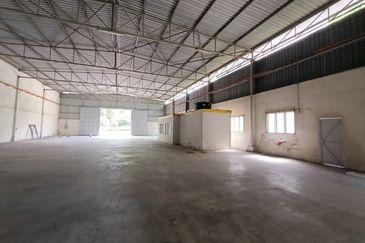
Kawasan Industri Desa Aman
Sungai Buloh, Selangor

Mayfair Residences @ Pavilion Embassy
Keramat, Kuala Lumpur

